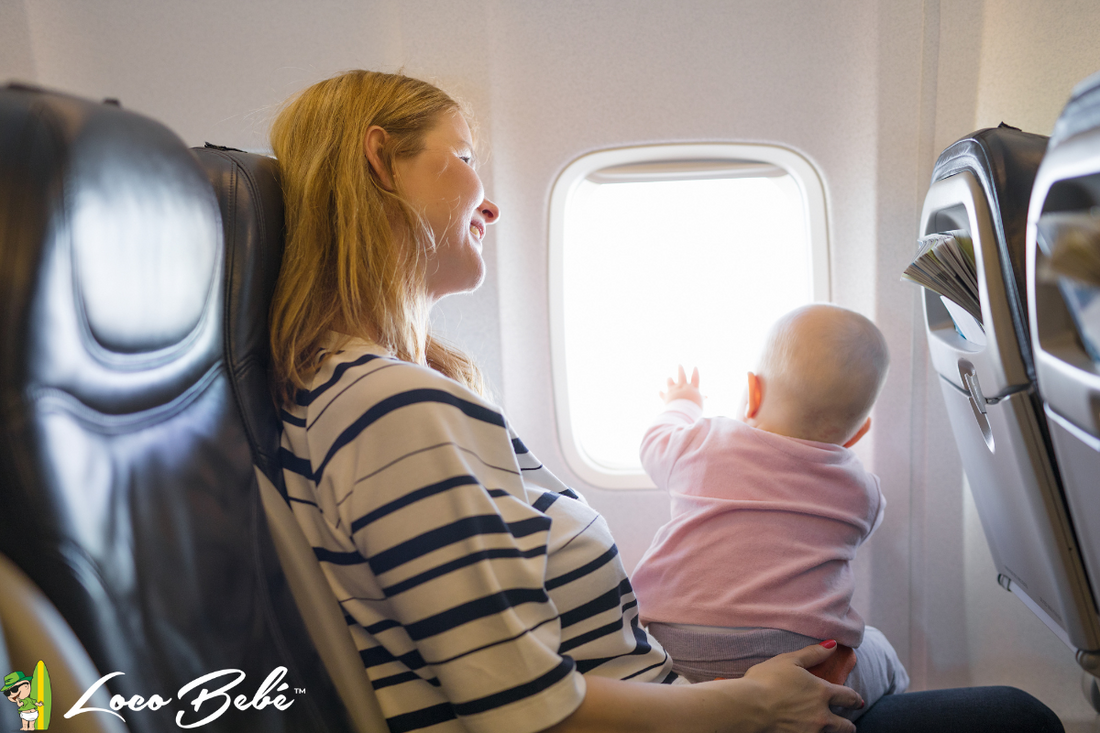
Traveling with you little one? You may be wondering, "Can You Bring Baby Food Pouches on a Plane?"
By Leanne GrantCan You Bring Baby Food Pouches on a Plane? A Travel Guide for Parents
If you're planning to travel with your little one, especially abroad, you're probably wondering: Can you bring baby food pouches on a plane? The short answer is yes, but there are some important guidelines and tips you should know to make your journey smoother—especially when you’re navigating airport security with a baby in tow.
At Loco Bebé, we know that traveling with babies is no easy feat. Between time zone changes, diaper bag prep, and unpredictable nap schedules, the last thing you want is to be stopped at security because of your organic baby food. This guide is here to help you understand how to fly with baby food pouches, what the rules are (especially TSA rules), how they might differ internationally, and what to expect when going through airport security.
TSA Guidelines: Can You Bring Baby Food Pouches on a Plane?
In the United States, the Transportation Security Administration (TSA) allows baby food pouches in both carry-on and checked luggage. Baby food—including puree pouches, jars, formula, and breast milk—is considered medically necessary, which means it is exempt from the usual 3.4-ounce liquid rule.
Here’s what you need to know:
-
You can bring baby food pouches larger than 3.4 oz in your carry-on bag.
-
You must declare them to TSA officers at the checkpoint.
-
Be prepared to have them screened separately, sometimes with swabs or additional visual inspection.
Don’t worry—TSA agents are generally understanding with parents traveling with young children. That said, having your baby present makes the process smoother, as it clearly demonstrates the need for the items.
What About International Travel?
When flying internationally, the rules can vary by country, but many follow similar procedures to the TSA.
In Canada and the UK:
-
Canada’s CATSA and UK’s Heathrow and other airports also allow baby food in reasonable quantities.
-
In both countries, baby food pouches are permitted if you’re traveling with a baby or toddler.
-
You may be asked to taste the food or open the pouch for inspection.
In the EU:
-
The European Union permits baby food in quantities “necessary for the flight,” but security procedures can be stricter.
-
Some airports require all baby food to be removed from your bag and placed in a separate tray during screening.
Tip: Always check with your airline and the airport you’re flying from and to. Rules may vary by airport, especially when you’re transiting through multiple countries.
Domestic Travel Within the U.S.: State to State
Within the United States, TSA guidelines apply nationally, so there’s no difference from state to state. Whether you're flying from New York to California or Texas to Florida, you can bring baby food pouches in your carry-on bag without worrying about state-specific rules.
However, individual airport staff and TSA officers may vary in how they handle the screening, so it’s best to give yourself extra time at security just in case.
What to Expect at Security
When you reach the security checkpoint, here's how to make the process as stress-free as possible:
-
Separate Your Pouches
Place your baby food pouches in a clear bag or easy-to-access compartment. When you reach the conveyor belt, take them out and place them in a separate bin. -
Declare the Baby Food
Let the TSA agent know you have baby food. A simple, “I have baby food pouches in my bag for my child,” will do. -
Prepare for Additional Screening
TSA may use a vapor test, swab the exterior of the pouches, or even open them for inspection (though this is less common). You will not be forced to throw away unopened pouches if you're traveling with your baby. -
Keep Your Baby Nearby
If your child is present, it’s easier to justify the quantity of food you’re bringing, and agents are often more flexible.
Pro Tips for Flying with Baby Food Pouches
-
Pack more than you think you need. Flight delays are real, and a hungry baby is no fun.
-
Choose pouches that don’t require refrigeration (like Loco Bebé’s shelf-stable organic pouches).
-
Bring a cooler bag for added protection, even if you don’t need ice packs.
-
Label everything. If you're mixing homemade baby food with store-bought, clearly label containers.
Why Pouches Are Ideal for Travel
Baby food pouches are a parent’s best friend when traveling—no spoons, no mess, and easy one-handed feeding. At Loco Bebé, our organic baby food pouches are designed with travel in mind:
✅ Shelf-stable
✅ No added sugar or preservatives
✅ Bold, tropical flavors your baby will love
Whether you’re heading to Grandma’s in Texas or exploring Europe with your family, our pouches are TSA-friendly and ready for adventure.
Final Thoughts: Can You Bring Baby Food Pouches on a Plane?
Yes—you absolutely can bring baby food pouches on a plane, both domestically and internationally. Just remember to follow the proper procedures, declare them at security, and allow extra time for screening.
Traveling with a baby may take a little more planning, but with the right preparation (and a stash of Loco Bebé pouches), you’ll be breezing through security and soaring toward your next adventure in no time.
Looking for organic baby food perfect for travel?
Browse our Loco Bebé organic pouch collection and pack your carry-on with Caribbean-inspired nutrition your baby will love.
Disclaimer:
The information provided in this blog is for general informational purposes only and reflects policies and procedures as of the time of writing. Airline and airport security regulations may vary and are subject to change without notice. We recommend checking directly with your airline and the relevant airport authorities or government websites (such as the TSA or international equivalents) before your trip. Loco Bebé is not responsible for any travel delays, denied items, or changes in security procedures.